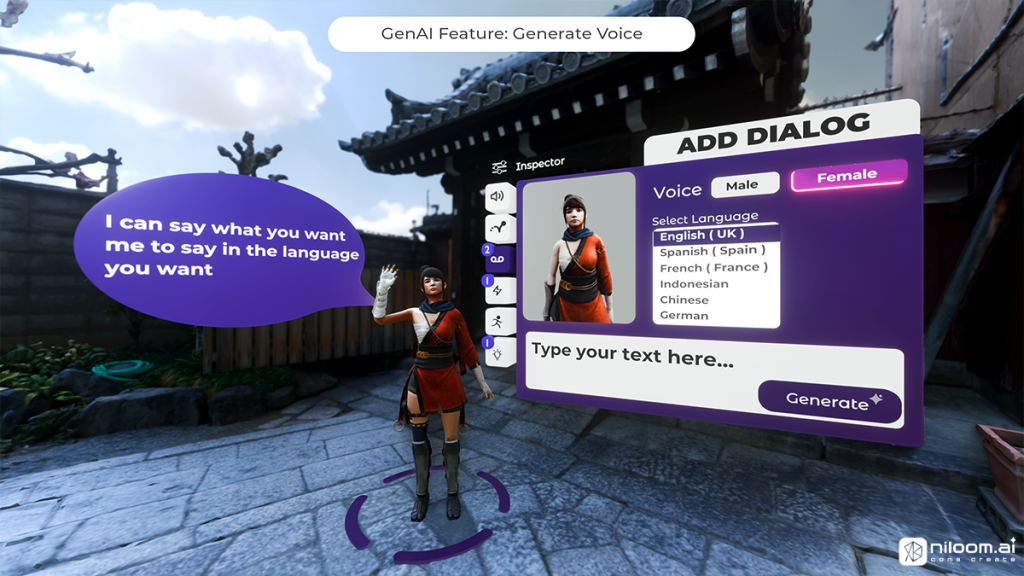AI image & video generation will bring about a new era of ease for content creators
While already capable of image and video creation, upcoming versions of AI generators are expected to improve attention to detail, realism, and accuracy in prompt interpretation over the rest of the year. Platforms like DALL·E 3, Midjourney, Firefly, and Stable Diffusion are already empowering creators and businesses to create visual art with ease.
Updated versions will have tremendous potential to empower small and individual content creators to bring their visual ideas to life and embark on creative exploration without needing technical expertise or extensive overheads associated with traditional graphic design. For businesses, this process will also accelerate their design processes and help their existing design teams craft high-quality visual resources faster and with greater accuracy.
Generative design will unlock greater creative options for designers
The potential of Gen AI in the design field is just being unlocked, already having a transformative effect on the design process for designers, engineers, and architects. Advanced Gen AI models have greatly accelerated the visualisation and modelling processes across these disciplines and are growing capable of analysing and offering creative inspiration based on aesthetic styles. There’s a notable trend towards the development of specialised generative design platforms, with established software like Fusion 360 and Siemens NX natively integrating generative design capabilities.
In the near future, we can expect to see more precision-focused disciplines adopting AI processes for not just design assistance and creative testing, but also to assess aspects like structural soundness and test the effectiveness of different processes, components, and materials. This has the potential to lead to greater uniformity and efficiency in design processes, as well as unlocking new avenues of creativity by opening new design frontiers.
Multi-modal integration will change how we interact with AI
Multimodal Large Language Models (MLLMs) are fundamentally reshaping our interactions with technology, closing the gap between code and conversation. With the trend towards evolving technology to be more naturally accessible through audio and voice commands, multi-modal AI integration is already on the horizon, with multiple chatbots and AI assistants accepting a wide range of basic voice commands. In the near future, we can expect these capabilities to expand exponentially, with AI platforms accepting multi-modal inputs in the form of text, images, or voice commands, and being able to respond with high levels of detail.
These can also be fine-tuned for specific industries, creating tailored solutions such as digitising note-taking, converting designs into functional websites, and carrying out advanced image analysis and filtering. These hybrid architectures are also laying the foundations for AI systems that will power the next generation of immersive augmented reality and virtual reality technology.
Extract actionable insights from massive data sets in real time
While possibly one of the earliest uses of AI, the process of data processing and analysis has been supercharged by highly trained AI models. At its current trajectory, AI should be able to expand from its current strengths of analysing and summarising existing data in real time, to also carrying out in-depth analysis on massive data sets to extract actionable insights â a function that will be invaluable for business leaders making key decisions in fast-paced environments.
Gen AI presents a transformative shift in research methodologies, offering capabilities to automate mundane tasks like data cleaning, unearth hidden patterns through sophisticated feature engineering, and rapidly generate and test hypotheses across vast datasets. Its real-time analysis and feedback loops are particularly valuable in dynamic fields like finance.
Consensus, Scite, SciSpace, Wordvice AI, ChatGPT, Research Rabbit, and Bit.ai are some of the trending AI tools for researchers to leverage. Further, with adequate data training, AI models will also be able to predict a variety of behaviours in business practice and highlight previously unnoticed causation relationships to help leaders better understand and drive their business performance.
Automated assistants and personalisation services will grow more capable and accurate
In 2024, the integration of AI-powered recommendation engines in personalisation services across various platforms has revolutionised user experiences like never before. Users now enjoy a seamless journey through streaming platforms, e-commerce, and media forums with tailored preferences and support systems. With advancements in AI assistants, users can expect even more personalised interactions that are designed not only to boost engagement but offer a meaningful experience to consumers through constant and accurate analysis of preferences.
With the evolving needs of users and the growing innovation pyramid, generative AI in 2024 promises streamlined tasks, hyper-personalised experiences, and a future where innovation thrives responsibly, ensuring that equitable access and ethical considerations remain paramount to foster a more empowered future.
(Our guest author is Arun Pattabhiraman, chief marketing officer at Sprinklr)




